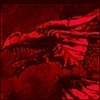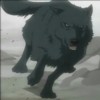Shining Force II (Genesis) review"Thereís a reason why Iíve revisited Moun on an almost yearly basis, and beaten the hell out of goat-eared mages. And itís the same reason why Iíll meet up with FREYJA around the same time next year and do it all over again." |
Youíve just smuggled you and your army into Moun and it hasnít been an easy trip. This fortified village was closed off by the Centaur King to stop the advance of the demon army swarming in from the mountains. This plays heavily on the mind of local monk FREYJA, the man responsible for locking the citizens behind its mammoth bronze gates and, after heís seen you slaughter a few hundred neíer-do-wells, he asks you to accompany him to try and rescue any would-be survivors. Despite a few ambushes by demon scouting parties, you reach the gate safely and steal inside the razed village. You are offered your warm greeting by a goat-eared magician flanked by heavily armoured soldiers.
Turns out no.
By the time your reach Moun, youíre in the last quarter or so of the game. In this time, youíve defeated a kracken, destroyed an ancient guardian and run riot over uncountable undead, mythical and hellborn menaces. The ranks of your army have swollen to bursting point; you can only field a force of twelve and so have to decide which troops need stay in the magical caravan and which fight. Birdman royalty sit unused next to elven archers previously saved from a sticky trap laid by ravenous harpies. Mythical beasts rub shoulders with rowdy dwarfs while thieves-turned-ninja and sorcerers with the ability to summon gods roam the battlefield. Centaur archers abandon the bow to take up explosive cannon shells instead, while once docile monks keep their wealth of healing spells but add a deadly combination of martial arts to the mix so long as you search your environment well enough to find hidden artefacts that aid their rank promotion.
Parmecia isnít a hospitable place anymore. Things start off simple enough; initially, you have main control of almost-silent protagonist, Bowie, and his army consists of his schoolmates under the tutelage of wizened Sir Astral, he of the magicianís hat and ridiculously long beard. As a group, thereís not much characterisation going on; Bowieís an honest lad with a big sword, Sarahís a cute girl with weak healing magic while Chester is half a horse and has a lance. Jahaís a little fellow not quite ready to grow a huge beard but able to handle a mammoth axe.
Bowie walks the overworld like the hero from a JRPG, exploring towns, taking items from the homes of the unwary and talking to villagers who all look exactly the same and have a maximum of two lines of text each. He can visit weapon shops, buy health potions and wander around vast open plains, sparse deserts and shallow waterways. He can explore the interiors of huge castles, invade mansions or just loaf around. This isnít noteworthy in and of itself; itís filler to eat up the space between battles. But even Shining Force IIĎs filler deserves its own paragraph.
Battle puts you in command of an army. Not a few guys with a static menu, but ranks of troops, yours to abuse like chess pieces. Warriors can be used as meat shields, suckering enemies into range of magic spell, flung spears or volleys of arrows. Stat buffs and healing spells are available, but every defensive option means the sacrifice of a more attacking slant. Kill something, and they make a cute little cry of pain, spin around on the spot and then EXPLODE.
It all works because Shining Force II keeps many of its elements simple, but its battles intense. Yet to learn from its Mega Drive cousin, Phantasy Star, it showcases a plot about a demon taking over the world in childrenís storybook tropes, gives its characterís lines of either poorly translated or poorly written dialogue then lumbers everyone with the emotional depth and maturity of a shoe. Scenes like the prologue are especially laughable, where the entire cast suddenly reveal hidden crushes theyíve harboured all along for teammate X, who was secretly in love with magic user Y who yearns for warrior Z. Itís silly to treat Shining Force II as a rolling epic. A recently converted general spends the last parts of the game bemoaning his transformation into the evil dead, and roams the world looking for a way to commit suicide, but it comes off more slapstick than tragic. The gameís attempts to hint at a subtle romance between two lead characters is played off as each stuttering at each other and refusing to make eye contact. Your most powerful warrior claims to be a legendary phoenix, but looks more like a multicoloured chicken able to spew sonic waves.
Doesnít matter. Before you step into Moun, you need fight fields of airborne lizards that hop over mountain ranges like they werenít there and nibble at your flanks while dark priests send volleys of magic into you from afar. Youíll be shrunk down to the size of bugs and forced to fight an infestation of angry rats after coming up trumps against sentient chess pieces. Youíll trudge through swampland littered with immobile magical mirror emplacements that fling bolts of laser across the screen or climb a hostile-choked pyramid where dragons hide behind pillars of sandstone.
Shining Force II has a depth that belies its simplistic approach. It has a myriad of hidden allies that can be recruited as easily as asking around one of the towns, or as complexly as gathering their broken body parts and trying to piece them back together. There are veiled villages manned by dwarfs that youíd probably never locate without the aid of the Internet, and permanent stat boosts hidden out there in barrels somewhere.
Itís a game that can become whatever you want to make it. You donít have to be a strategic genius: you can warp out of unfinished fights then re-enter as much as you desire until you level your forces up to nigh unstoppable gods, but that would be missing the point. Back in the 16bit days, developers made their games overly-hard for the purpose of elongation because they did not have the applicable hardware to make games the size and complexity they do today. As such, gaining experience becomes the only way to overcome stacked odds, and a generation undertook a wave of grinding unseen until recent Korean MMOís became the norm. You can side-step that here simply by being smarter than the AI, by picking the right soldiers and learning their pros and cons. Either way, the gameís still huge: thereís so much to discover or to cleverly batter to death that any need to pad the title out is made obsolete.
Thereís a reason why Shining Force II is still held in such high regard today and spammed by SEGA to play on almost any console ever invented anywhere by one means or another; itís ahead of its time. So far ahead, that it still makes itself relevant almost twenty years after its initial release. It seems to effortlessly caress the line between (and I openly apologise for employing these trite phrases) hardcore and casual gamers because it provides a perfect little slice of what either party is looking for.
 |  |  |  |  |
Staff review by Gary Hartley (May 10, 2011)
Gary Hartley arbitrarily arrives, leaves a review for a game no one has heard of, then retreats to his 17th century castle in rural England to feed whatever lives in the moat and complain about you. |
|
More Reviews by Gary Hartley [+]
|
|
If you enjoyed this Shining Force II review, you're encouraged to discuss it with the author and with other members of the site's community. If you don't already have an HonestGamers account, you can sign up for one in a snap. Thank you for reading!
User Help | Contact | Ethics | Sponsor Guide | Links









